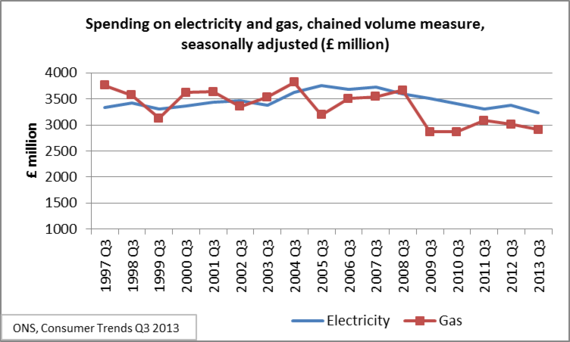The first few weeks of 2014 have shown that, while commentators and economists seem convinced that the recovery has set in, the economic and political battle over living standards and the cost of living remains as strong as it was in 2013.
Looking at how individuals and households are feeling reveals why. The Which? consumer insight tracker has been highlighting that, while consumers are more confident about the UK economy, they continue to feel squeezed. The most recent data (December 2013) show that the proportion of people expecting the UK economy to improve over the next 12 months has risen to 36% from 21% a year ago. However, when asked about their own finances, just 25% of people think that they will improve over the next 12 months (compared to 24% a year ago). Consumers also remain worried about the costs of essentials (energy prices - 82%; food prices - 72%), their debt (45%) and potential job loss (47%).
The continuation of this perceived squeeze is unsurprising when considered in the context of the most recent ONS publication on consumer spending. It underlines that, while household spending on goods and services has risen by some 18.2% since the peak in the fourth quarter of 2007, household purchases in volume terms (i.e. after accounting for increasing prices) still remain 1.7% below that peak.
In short, the squeeze is real: coupled with slow wage growth, continued price rises have meant that households are spending considerably more but still consuming less than before the financial crisis.
Of course, such changes are not just about consumers changing their consumption behaviour and being forced to consume less (e.g. changing the types or amounts of goods or services purchased). Some of the explanation is likely to be that households are consuming smarter by engaging more actively and using tools to help get the same outcomes for less money (e.g. by switching providers or managing their needs for the product or service).
A stark example is in the energy market. The same ONS report shows that after a period of relative stability, as prices have risen and incomes fallen, household volume spending (broadly speaking, consumption) of gas and electricity has reduced dramatically. This will have been the result of a combination of improved energy efficiency (e.g. through government policy like the CERT programme) and changing behaviour, but it is the extent of these changes that is astounding. The chart shows that between Q3 2008 and Q3 2013 (when total household expenditure on gas and electricity rose by 6% and 9% respectively) household consumption of gas fell by over 20% and electricity by 10% respectively.

This is just an example from one consumer market. We have already seen the broader impact in mixed results from retailers over the Christmas period. This means that whether or not these shifts will continue is a major question for consumers and, by implication, businesses in the UK. The next set of data from the Which? tracker will be published later this month. It will be interesting to see whether and how continued confidence in prospects for the UK economy have begun to feed through into more positive feelings about household finances. Until that happens and until consumers can actually increase consumption, rather than just spending more (more of this in a blog to follow), the cost of living and living standards will remain right at the top of the public debate.